Practicing SEO for your website? You are not the only one who is doing it. And most likely, other websites target the exact same keywords you want to rank your website pages on.
How can you get the competitive edge to rank in the top positions you want in the search engines? Well, one of the things you can do for that is by building your website’s backlink profile.
Backlinks can determine the trust that search engines have for a website’s content. The better backlinks your website has compared to other websites, the more chances it should have to rank better in the search engine result pages.
Talking about backlinks, there are two main types of them that people who practice SEO should know. They are dofollow links and nofollow links. If you want backlinks that support your SEO results significantly, then you most likely want dofollow links instead of nofollow links pointed to your website.
Why is that? What are these dofollow links, and how can you get them for our website? Let’s discuss the answers to these questions in this post.
Content:
What are dofollow links?
Dofollow links are the links that search engines count as votes of confidence for your website.
During the early days of search engines, many people spammed or paid for links to get to the top spots of search engines much easier. Google noticed this bad practice. As a result, it introduced a way to differentiate links that count for determining the rankings in its search results.
Google requested that websites mark spam links, paid links, or links that it doesn’t want to endorse with the “nofollow” tag. Besides the “nofollow” tag, there are also other tags introduced later with more or less the same effect in SEO as the “nofollow” tag:
- “ugc” attribute for links within user-generated content such as comments or forum threads;
- “sponsored” attribute to identify links that were created as part of advertisements, sponsorships, or other compensation agreements.
The links without those special tags are considered dofollow links. These are the links that search engines follow to determine the level of a website’s authority.
Dofollow links vs. nofollow links
Dofollow links and nofollow links are two types of links whose difference matters in the world of SEO. That difference is, of course, related to whether search engines follow the link or not.
Search engines consider dofollow links for their rankings determination while ignoring nofollow links. Although several case studies have argued that nofollow links have a positive impact on a website’s SEO results, the official stance is that nofollow links aren’t that useful.
However, in terms of referring traffic to your website (as normally a link should), dofollow and nofollow links act the same. After all, there is no difference in the link appearance between the two. Thus, if referral traffic is what you aim for, you shouldn’t worry too much about whether a link is a dofollow link or nofollow link.
How to check if a link is dofollow or nofollow
Need to determine whether a link on a website page is a dofollow or not? If you use Google Chrome as your browser, just right-click on that link and choose “Inspect.”
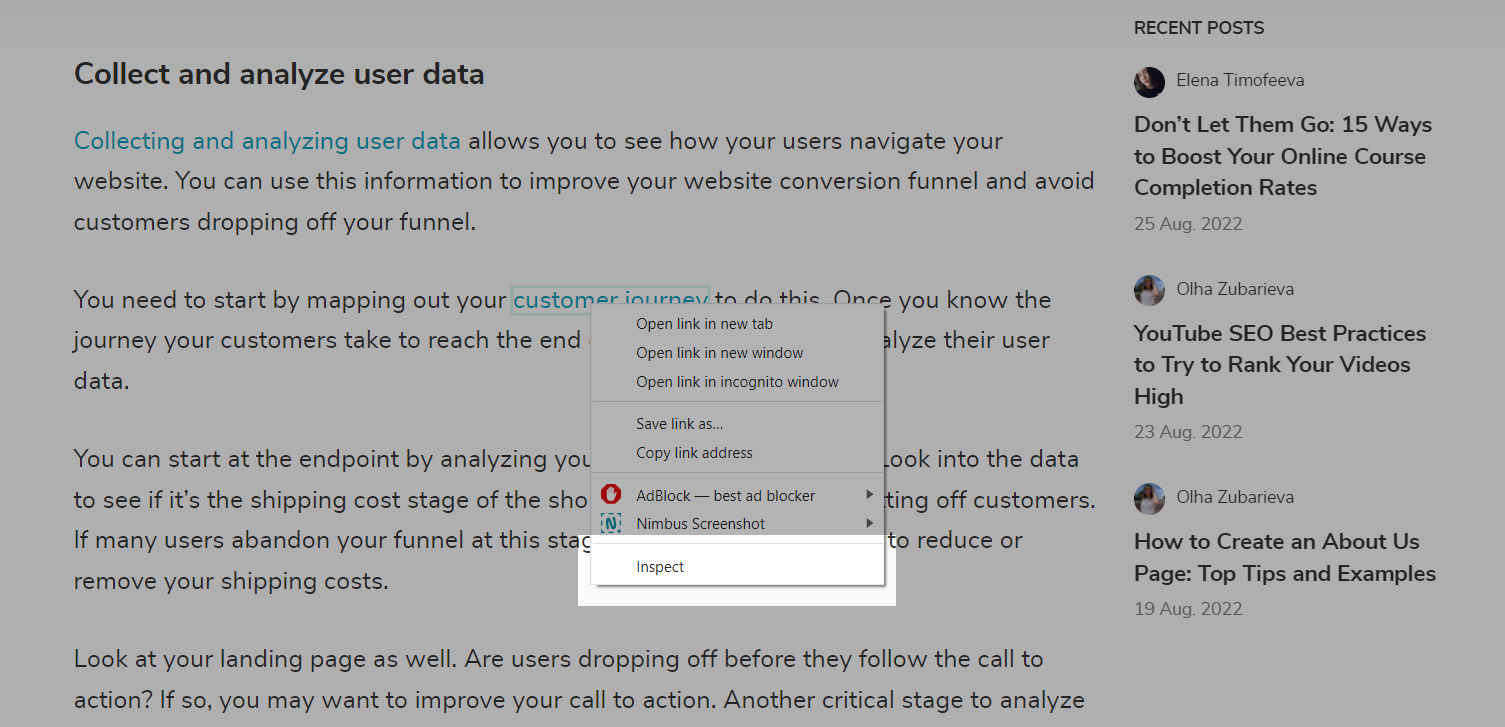
After you do that, you should be able to see the link’s code, which Google Chrome highlights.
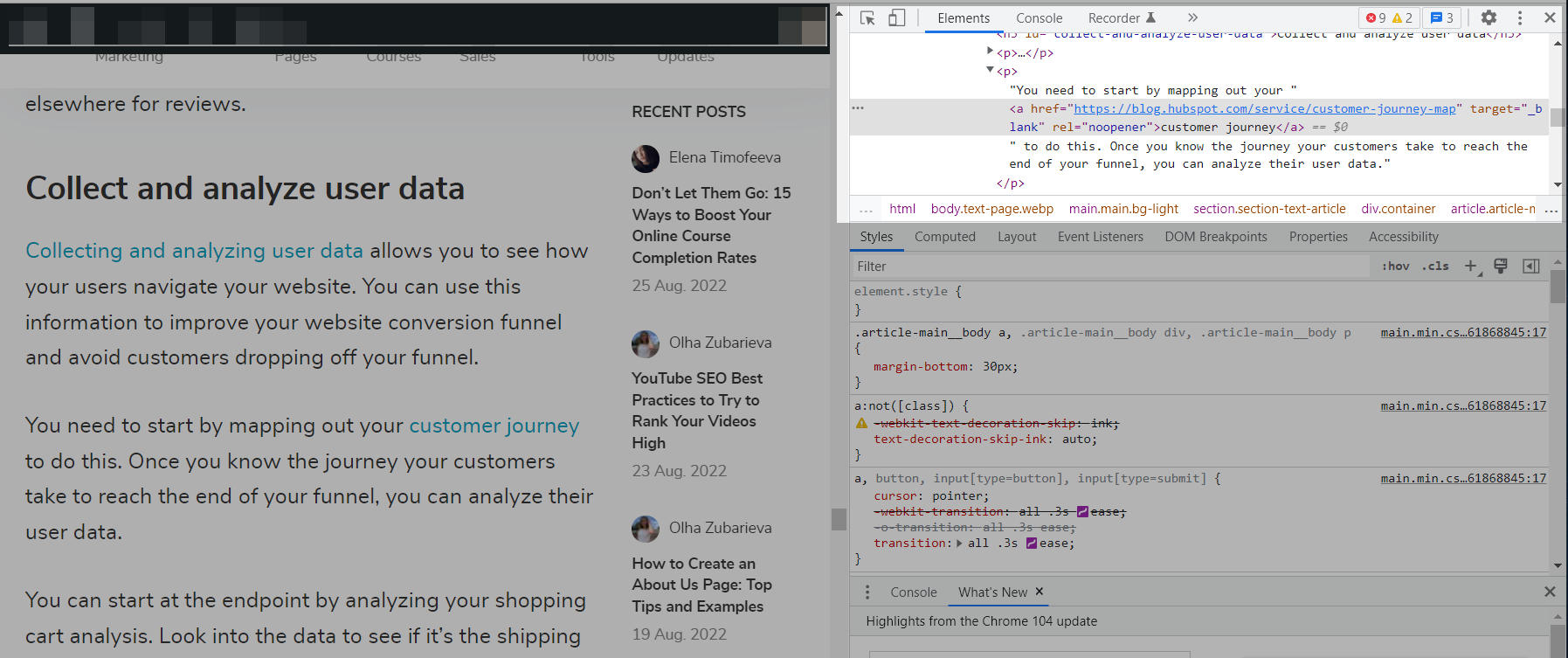
If it doesn’t have the “nofollow,” “ugc,” or “sponsored” rel attribute, it means it’s a regular, followed link.
Moreover, there are also some link checker tools that you can use to help you determine whether the links on a website are dofollow or not. One of those tools is Linkparser.
Linkparser is a Google Chrome extension you can use to easily identify the dofollow links on the website page you visit. Just click on the extension icon when you are on a website page, and it will give special color marks to the dofollow links there.
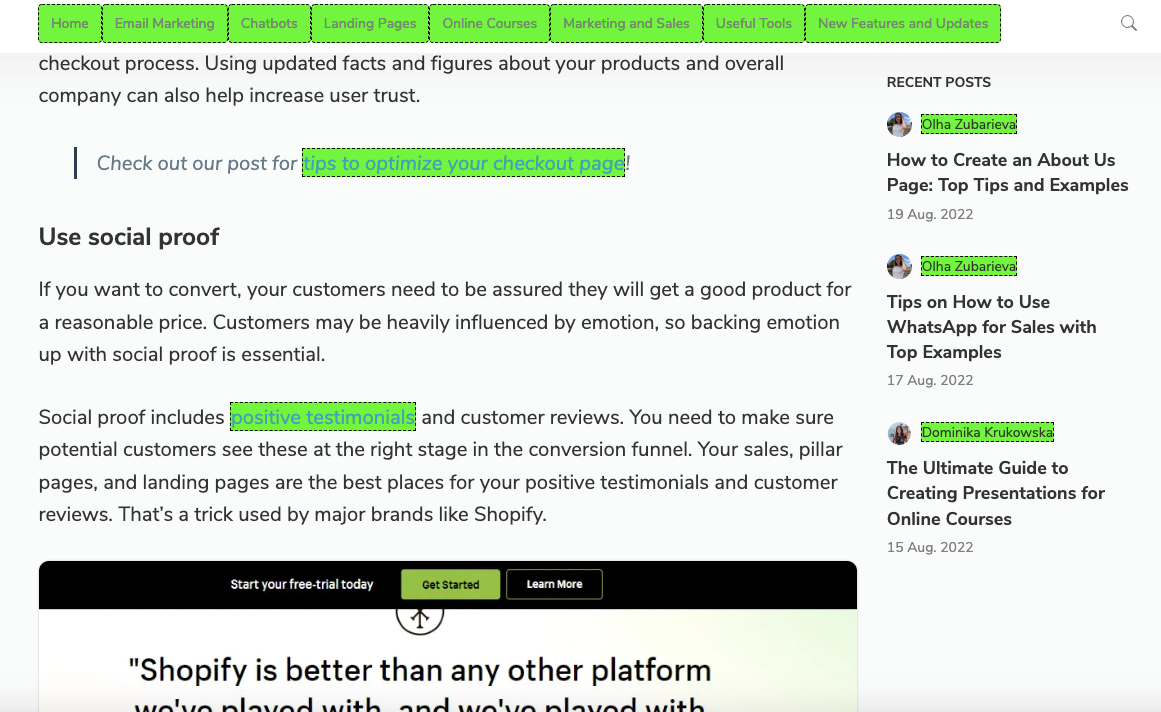
You can also change the colors you want to use to differentiate link types in the Linkparser’s options menu.

If you prefer to get the identification of the dofollow links in a report form, you can use the Link Analyzer instead.
To use the Link Analyzer tool, input the URL of the website page you want to identify the dofollow links of and click the “Submit” button. The tool will then give you a report of the number of external and internal links on the website page that you submit, plus whether those links are dofollow or not.
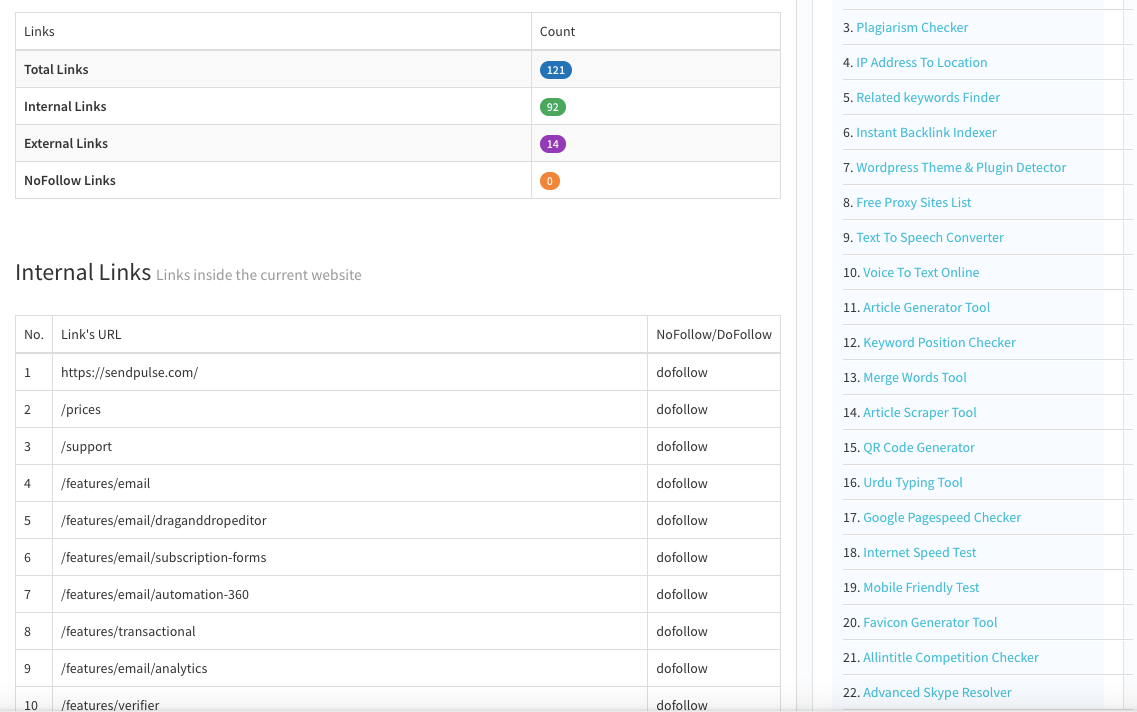
Why are dofollow links important for your website SEO?
As we have discussed before, dofollow links help a website become more trustable in the eyes of search engines. The more dofollow links your website gets (as long as they don’t come from spam websites), the better it should be for the results of its SEO.
After all, backlinks are one of the most important ranking factors for search engines. A website with a good backlink profile consisting of many dofollow links from quality websites should be able to rank most of its content more easily. As a result, more organic traffic should come to that website, which is just what we all want from our SEO process.
The positive impact of dofollow links in SEO has been proven by the Backlinko research. It turned out the Ahrefs Domain Rating and Google rankings correlate with each other.
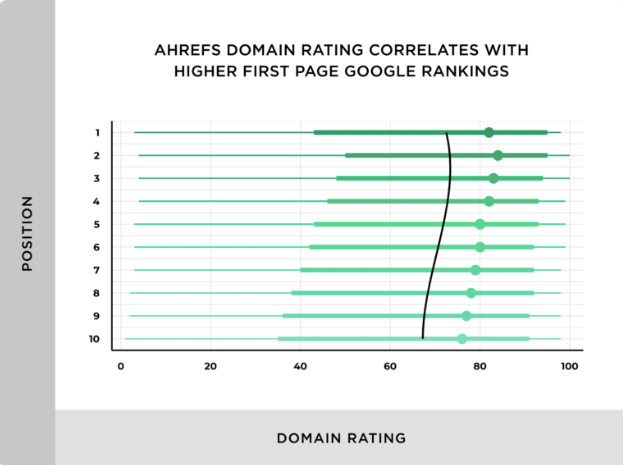
This should empower the argument that dofollow links affect the Google rankings of a website positively.
Besides that, a good dofollow link usually comes from a well-maintained website with considerable traffic. This can make the dofollow link become a reliable source for referral traffic. As people who come to the website see your link, some of them may decide to visit your site, which means more traffic for you.
Quality dofollow links criteria
The higher the quality of the dofollow links that point to our website, the better it should be for our SEO results. However, what are the things that can make us say that a dofollow link is a quality dofollow link?
In general, some criteria you can use to determine a quality dofollow link are the following:
- it comes from an authoritative and well-maintained website (you can use the measurement given by some SEO tools to determine a website authority if you want);
- it comes from a website that doesn’t give dofollow links to many websites;
- it doesn’t come from the same website as the one that has given a dofollow link to your website before;
- it comes from a website in the same niche;
- it shows up early in the website content;
- it has a label similar to or related to the keyword your content wants to target.
If you can get this kind of dofollow link more than any of your competitors, you should be able to get more top rankings in the search engines.
Furthermore, when we talk about dofollow links, quality always trumps quantity. It is much better to have few quality dofollow links than many dofollow links that come from dubious and spam websites. In fact, many low-quality dofollow links may even make search engines penalize your website and give you significant ranking losses.
How to get dofollow links
Now that we have understood what dofollow links are and why they matter, let’s discuss how to get them.
The most natural (and the one search engines suggest the most) way to get dofollow links is to create consistently excellent content on your website and hope that it will accumulate backlinks over time as other website owners see and recommend it. However, just passively waiting for dofollow links to point themselves to our existing content might make us much slower to get them compared to other websites that actively try to get those dofollow links. Moreover, it can be hard for a new or low authoritative website to get the traffic it needs to attract those passively gained dofollow links.
So, what can we do to actively pursue dofollow links, especially the quality ones? Luckily, there are many methods you can use. Here are five well-known ones that you might want to try if you haven’t.
Guest posting
This first method involves contributing an article to another website. If the website accepts your article, it should publish it with potential dofollow links given to your website.
When you do guest posting, make sure you write a high-quality article that adheres to the other website guidelines. That should give your article a higher chance of getting accepted and published.
Broken links
A broken link is a link that leads to a website page that doesn’t exist. It is something website owners don’t want because it can give a negative experience to their website visitors. This concern of a broken link is what we try to help in this method.
Here, you try to find a broken link in the content in the website content you want to get a dofollow link from. To help you find the broken link, you can use a broken link checker tool. One example of such a tool is Check My Links.
To use Check My Links, click on the extension icon on the website page where you want to find the broken links. The extension will mark the broken links that it finds with red color.
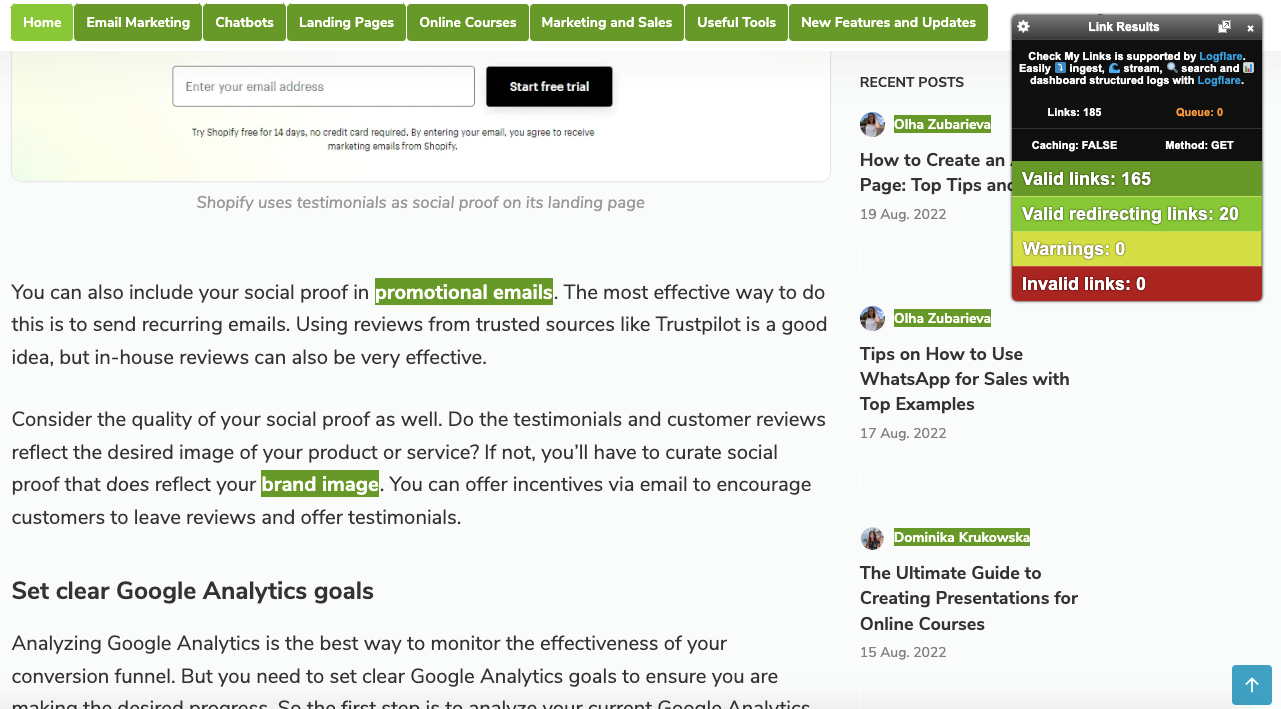
Another broken link checker tool you can use is Broken Link Checker. Similar to Check My Links, you just need to click on this extension icon to inspect the broken links on a website page. It will mark them with red color.
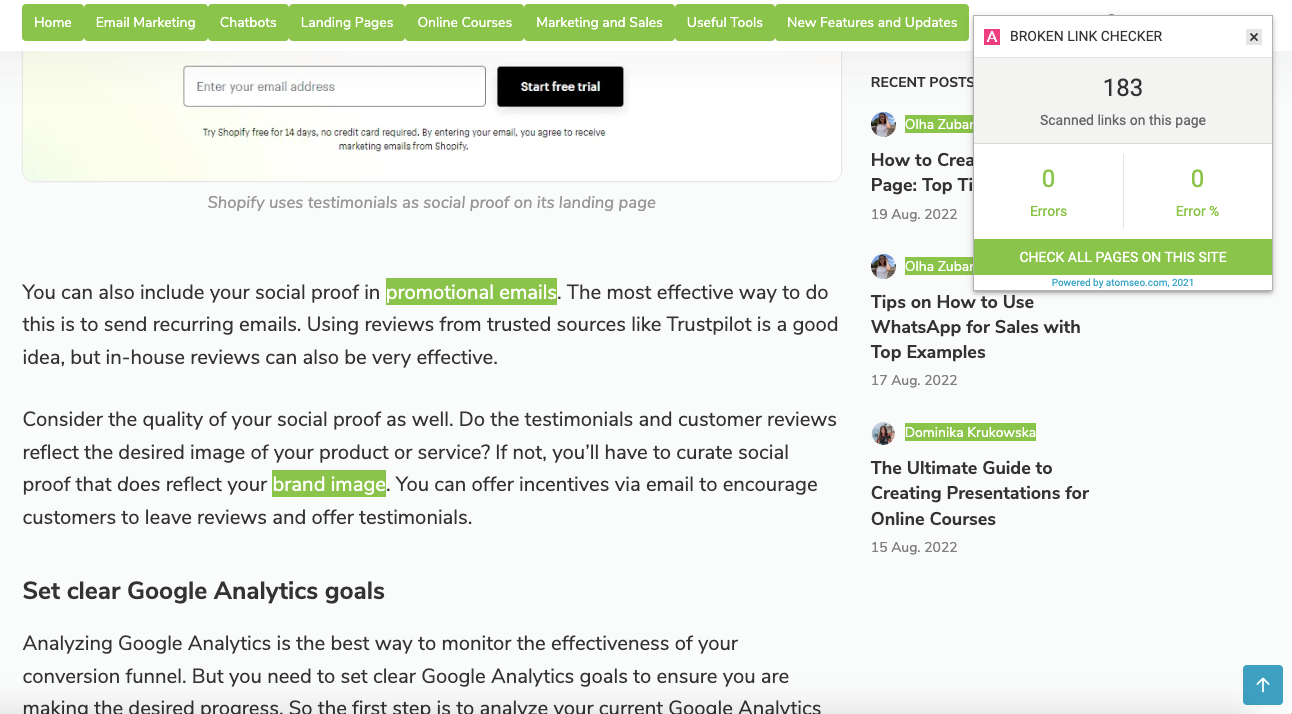
When you find the broken link and its content is similar to what you have on your website, you can suggest the website owner change the broken link into a link to your website content.
For a successful outreach, your website content should have similar or even better quality than the one from the broken link. If done right, it should help the website owner as well since they don’t have to spend time locating the broken link and finding a quality replacement for it.
Competitor backlink profile check
Other websites in your niche will likely try to get dofollow links to improve their SEO results. As they should have a similar kind of content to what your website has, you can probably get the dofollow links they get.
Because of that, it should be worth checking their backlink profile and looking at the dofollow links they have gotten. See which ones you think you can get for your website too. Then, just try to get them.
You can use SEO tools like Ahrefs, SEMrush, Serpstat, and Moz to help you check your competitor’s backlink profile. For example, if you use Ahrefs, you can go to its “Site Explorer” section. Then, input the URL of the competitor’s website, press “Enter,” and navigate to the “Backlink” tab. There, you can see the list and the details of the backlinks your competitor’s website has.
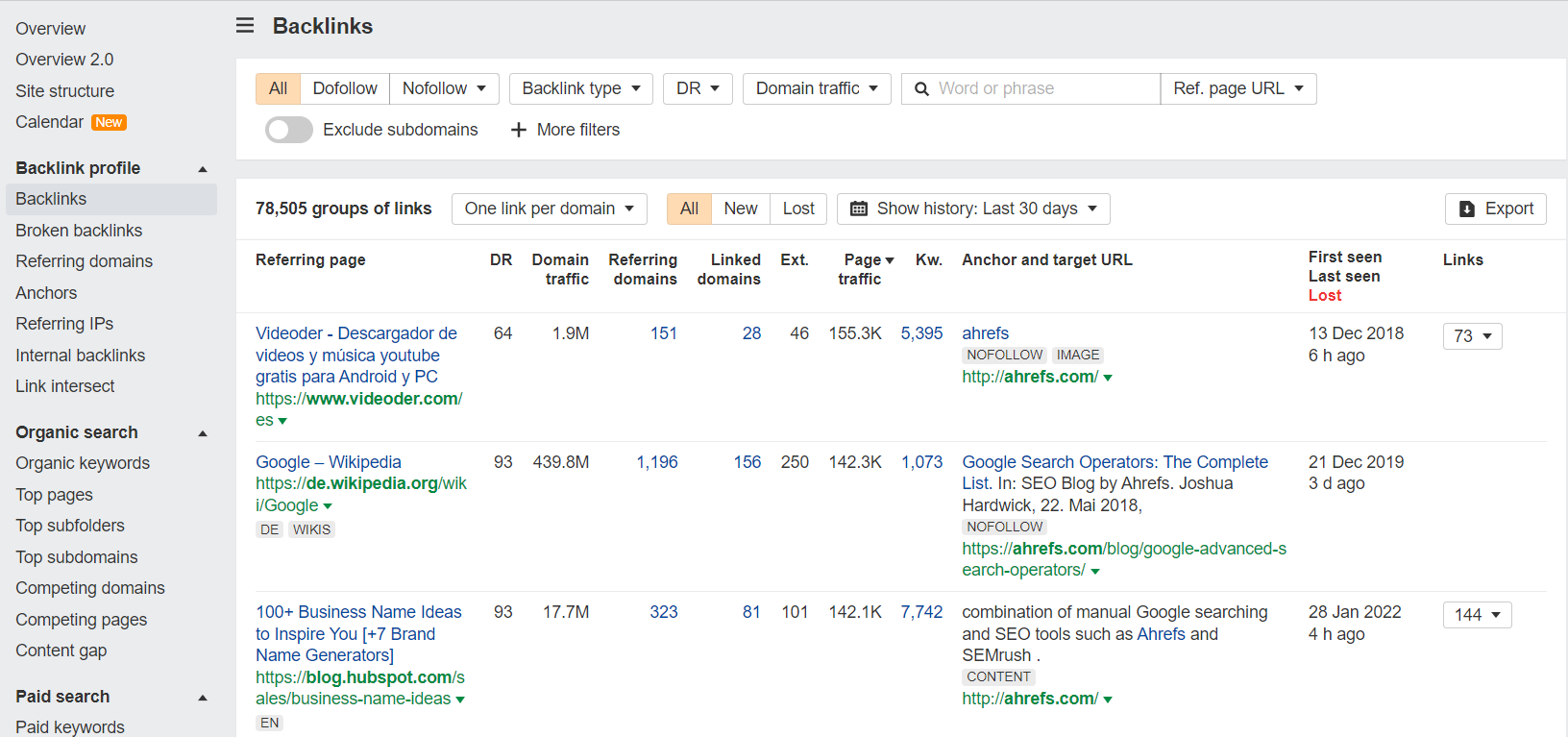
By implementing this method, you should be able to know your competitors better too and, if there is any, bridge the gap with them with more focus.
Skyscraper technique
To implement this method, try to find content that attracts many dofollow links in your niche. You can use SEO tools to help you do that.
For example, if you use Ahrefs, you can go to its “Site Explorer” section and input a popular website in your niche in the provided text box. Then, go to the “Pages” part and navigate to the “Best by links” tab. Next, sort the list of the website pages according to the number of dofollow links. Ignore the homepage and pages that aren’t articles when you check pages that have many dofollow links to them.
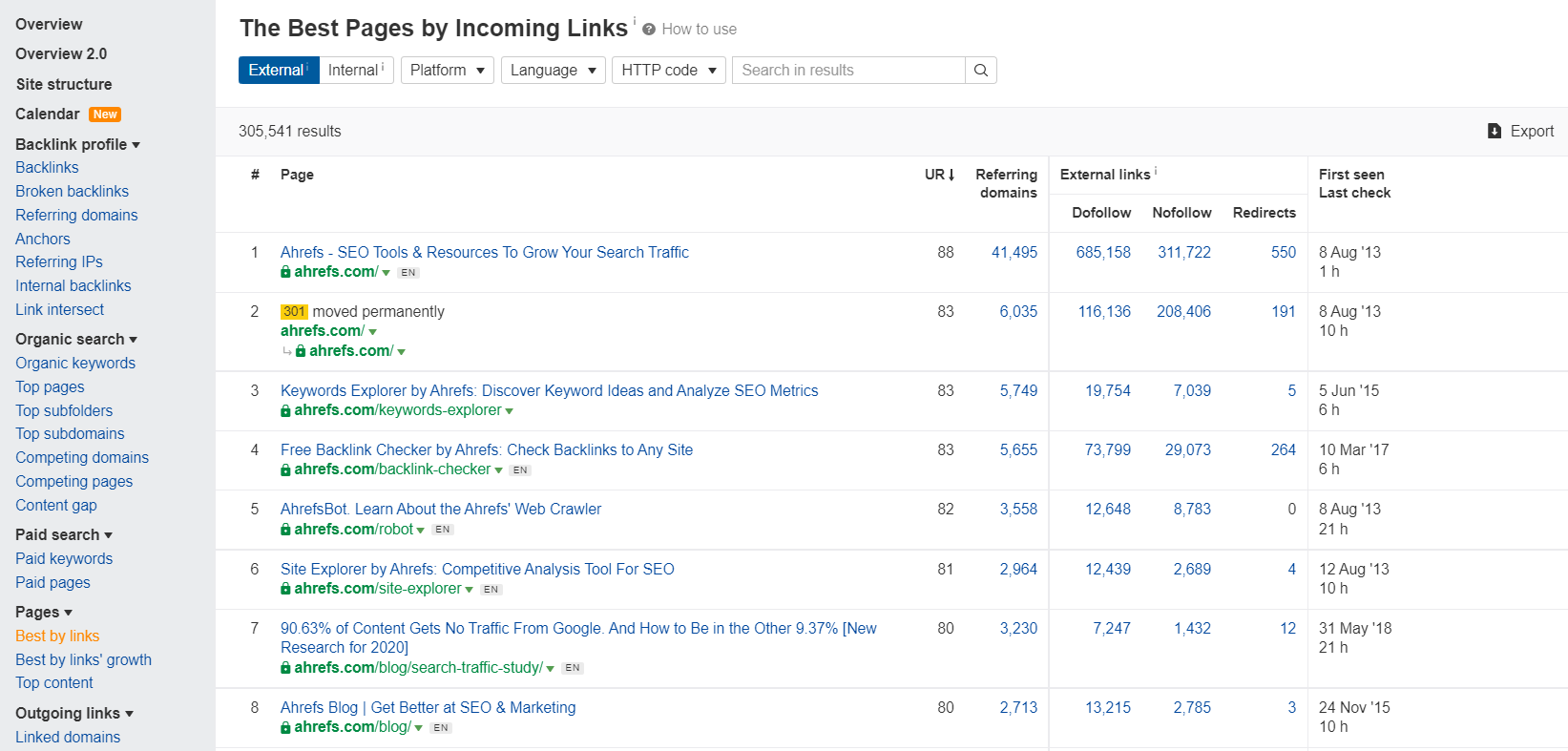
By doing this, you should find the content in your inspected website that gets many dofollow links. After you find them, create and publish content on your website that has much better quality than their content.
After you have your content, contact website owners that give the dofollow links to the benchmarked content and try to convince them to change their reference to your content. If it really has better quality than the content they currently refer to, some of them should be interested in pointing their dofollow links to your content instead.
Help A Reporter Out (HARO)
HARO is an online platform that connects journalists with possible sources. The journalists ask for comments or expert opinions on their article topic and are ready to credit the sources with possible dofollow links.
Many journalists from authoritative media websites join the platform, so it can be a great source for quality dofollow links to your website. To get the links, register to the platform as a source. You will then get daily emails (Monday to Friday) containing a list of journalists’ queries.
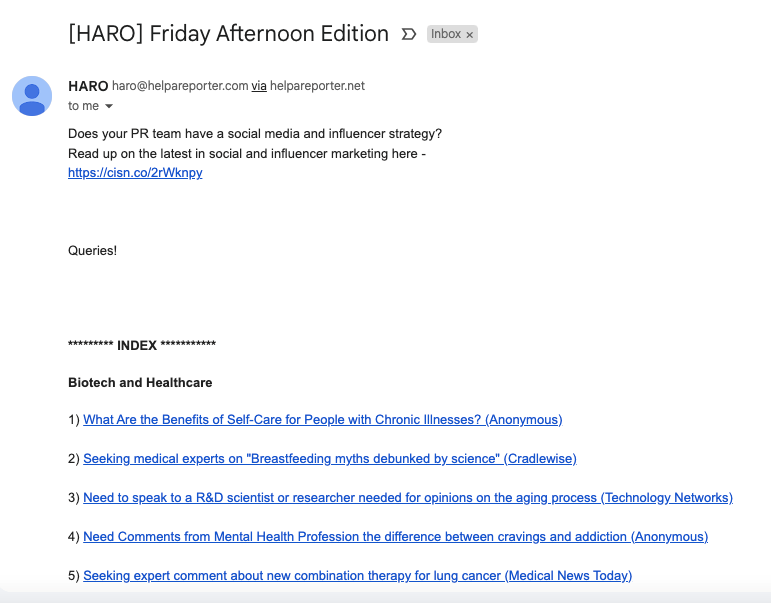
Try to pitch your response to the journalists’ queries based on your experience or expertise. You can submit your pitch by logging in to your account at the HARO platform and sending your pitch from the form provided there.
The more pitches you send, the more chances you should get to acquire the dofollow links you want.
Conclusion
Dofollow links are important when you want to get optimum SEO results for your website. After all, they are one of the most important ranking factors for search engines. Having many quality dofollow backlinks should help you get top rankings in the search results easier.
Include the dofollow link-building process in your SEO tactics and try to build positive relationships with other website owners to get the dofollow links. Doing that should make your website more authoritative and more trustable over time in the eyes of search engines.









